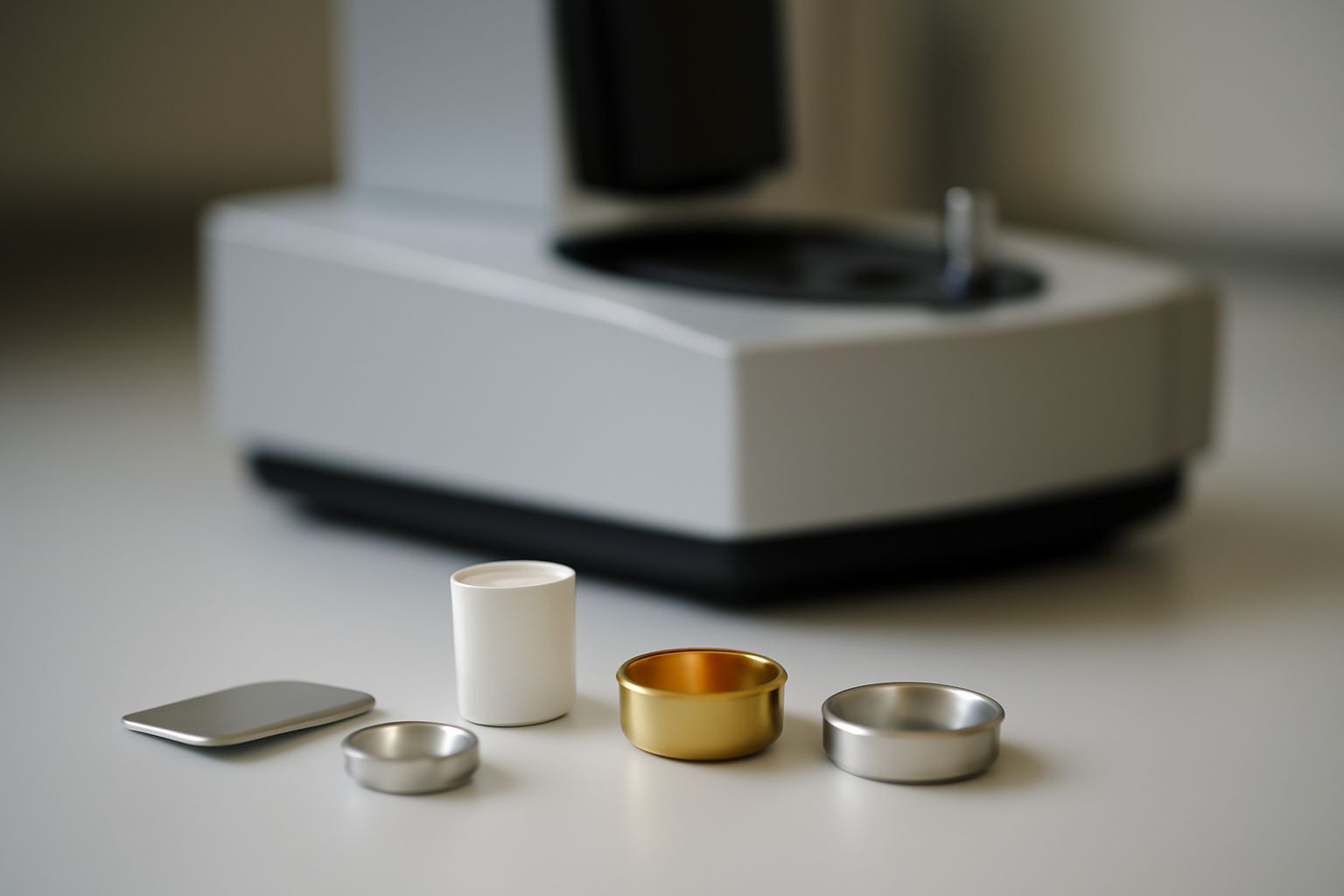Your cart is empty.
shop now
Your cart is empty.
shop now
Labs often overspend by choosing the wrong type of TGA-DSC sample pans and crucibles. Selecting by price alone can lead to more frequent replacements and lower data quality.
The cost-effectiveness of TGA-DSC sample pans and crucibles depends on balancing material cost, durability, and compatibility. Evaluating long-term use, maintenance, and reliable third-party options helps lower total lab expenses without sacrificing performance.

I see labs achieve the greatest savings by weighing initial price against service life and real-world performance. Let’s examine the most important cost factors in thermal analysis consumables and how smart buyers optimize every dollar spent.
Ignoring material costs leads to surprise overruns and tight budgets. The true expense goes beyond unit price—some pans cost less but fail more often, raising overall lab spend.
Aluminum pans are the cheapest. Platinum and gold carry the highest price tags. Ceramics and alumina sit in the middle, offering high heat resistance at moderate costs.
| Material | Cost per Unit | Reuse Potential | Common Use | Reference |
|---|---|---|---|---|
| Aluminum | $0.2–$1 | Single-use | Daily poly/organic tests | ScienceDirect |
| Platinum | $30–$100 | Many cycles | Harsh, high-purity work | Nature |
| Alumina/Ceramic | $2–$10 | Multiple uses | Metals, high-temp samples | Materials Today |
| Gold | $50–$200 | Many cycles | Precision, pharma QA | Technical reports |
I always check annual test volume and sample type before ordering. Lower upfront cost may mean higher annual spend if reliability is not built in.
Weak pans raise costs with constant reorder cycles and more failed tests. Labs waste indirect budget on staff hours, supply management, and downtime.
Durable pans made from platinum or alumina last for dozens to hundreds of runs. Though they carry higher prices, their long lifespan means reduced waste and fewer urgent purchases throughout the year.
| Material | Expected Uses | Replacement Frequency | Annual Cost (Est.) | Further Info |
|---|---|---|---|---|
| Aluminum | 1 | Very high | $200–$1000 (high load) | Lab cost study |
| Platinum | 100–300 | Low | $100–$600 | ScienceDirect |
| Alumina | 50–150 | Medium | $150–$800 | Materials Today |
| Gold | 300+ | Very Low | $300–$700 | Gold info |
I keep a replacement log and total cost file for every pan material we use. This helps me demonstrate long-term savings to the finance team and plan orders more efficiently.
Picking only based on cost risks low accuracy or ruined samples. The right approach matches price to actual application and runs cost-benefit checks on every order.
Balance comes from reviewing sample chemistry, needed precision, pan life, and cleaning effort. Sometimes spending more up front trims indirect costs, especially in regulated or high-volume labs.
| Factor | Low-Cost Pan | Premium Pan | When to Choose | Guideline |
|---|---|---|---|---|
| Accuracy | Adequate for routine work | Top for pharma, R&D | Premium for critical tests | Instrument SOP |
| Maintenance | No, just discard | Needs cleaning, tracking | Premium for skilled staff | Lab labor manual |
| Reactivity | Watch for chemical limits | Superior inertness | Premium for mixed or reactive jobs | Inertness |
| Cost-per-test | Lowest per unit | Lowest over long term | Premium for large volume/testing | Lab usage report |
I run annual reviews of pan failures, sample loss, and rerun cost. Regular analysis tells me when to switch materials, vendors, or protocols to save time and money for my lab.
Exclusive contract pricing or OEM-only buying often inflates daily consumable spend. Many labs miss out on quality alternatives by not considering reputable third-party sources.
Certified third-party pans, made from matching materials, bring similar performance and compatibility at reduced cost. Cost savings can be over 30% without giving up test reliability or compliance.
| Supplier Type | Material Match | Unit Cost | Performance Equivalent | Real-World Savings |
|---|---|---|---|---|
| OEM (original equipment) | Exact | High | Certified, backed by brand | None (premium) |
| Third-party | Identical or near | Lower | Passes fit and reactivity tests | 20–45% per order |
Before each large purchase, I test a sample batch from third-party suppliers and review documentation. Good suppliers provide specs, compliance data, and even references from leading labs.
Understanding price, durability, and compatibility helps labs make the best choice in TGA-DSC sample pans and crucibles—reducing costs while keeping data quality strong and workflows efficient.
Contact technical support: info@redthermo.com